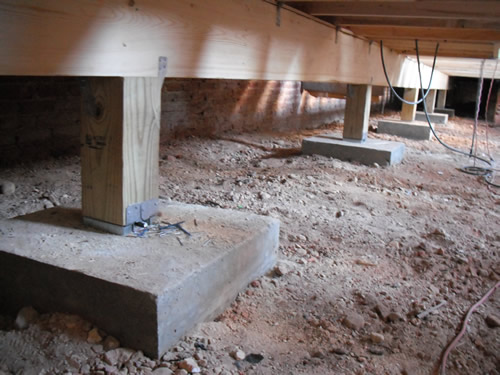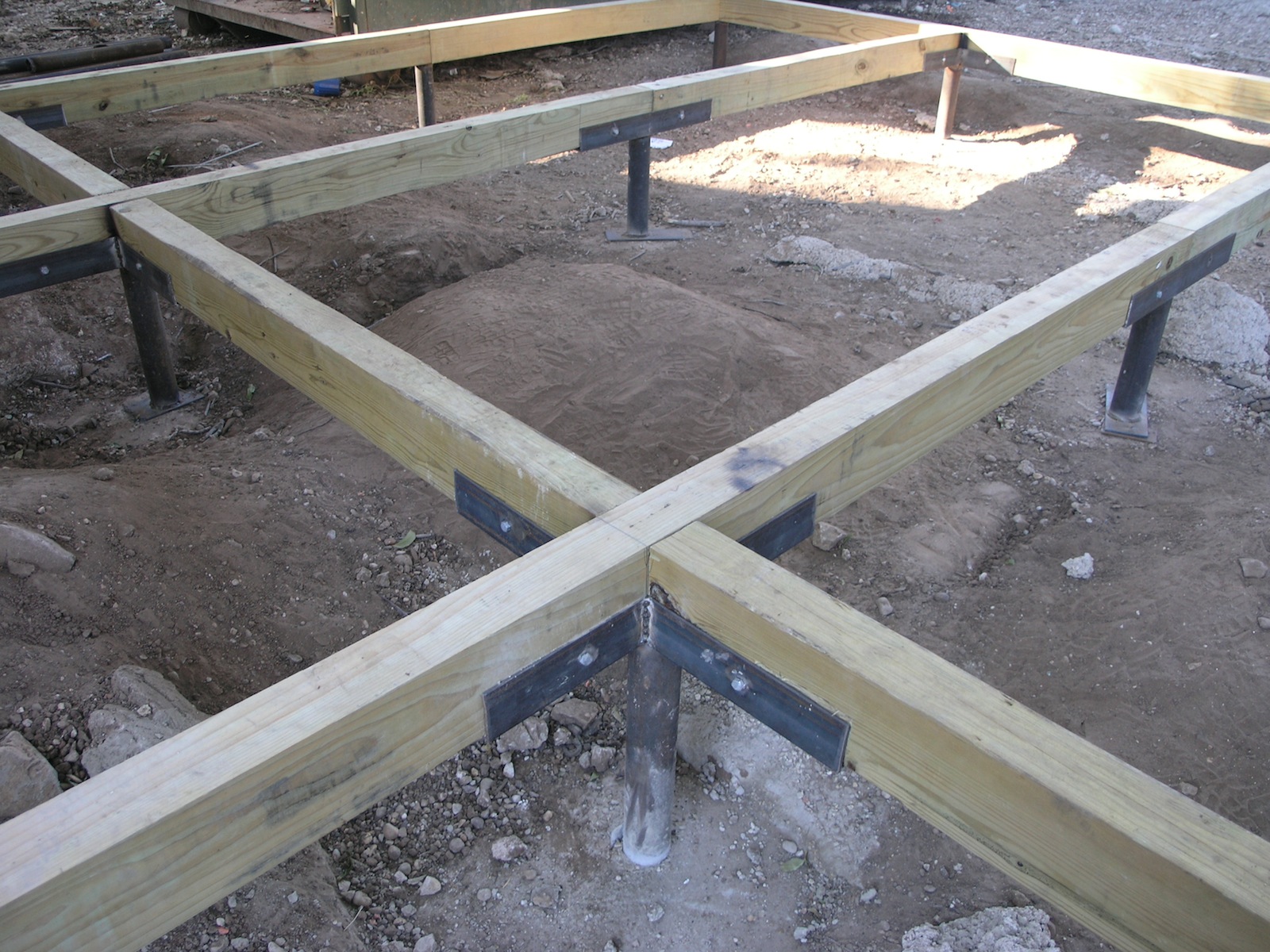Pier and beam foundation repair houston: level pro foundation
Pier and Beam Foundation Repair in Houston

The foundation of a building plays a crucial role in maintaining its structural integrity and stability. One of the common types of foundations used in Houston is the pier and beam foundation. This foundation system consists of a series of vertical pillars, known as piers, which are placed deep into the ground to provide support. Horizontal beams are then placed on top of these piers to distribute the weight of the structure evenly. 
What is a Pier and Beam Foundation?
A pier and beam foundation, also known as a post and beam foundation, is a common type of foundation used in many residential and commercial buildings in Houston. This foundation system is designed to provide stability and support to the structure by transferring the weight of the building to the ground through a series of piers and beams.
The piers, which are typically made of concrete or other durable materials, are placed deep into the ground at regular intervals. These piers act as vertical supports and are designed to withstand the weight of the structure above. The beams, which are placed horizontally on top of the piers, help distribute the weight of the building evenly across the foundation. This distribution helps prevent uneven settling or shifting of the structure over time.
One of the advantages of a pier and beam foundation is its versatility. This type of foundation can be built on a variety of soil types, including clay, sandy, or highly expansive soils. It also allows for easy access to the utilities and plumbing systems, as they can be installed within the crawlspace created by the elevated foundation.
Signs of Foundation Problems
While pier and beam foundations are known for their stability, they are not immune to issues that can arise over time. Here are some common signs that indicate potential problems with a pier and beam foundation:
1. Sagging Floors
A noticeable sag or dip in the floors can be an indication of a foundation problem. This can occur when the support beams or piers beneath the floor are deteriorating or shifting.
2. Cracks in Walls or Ceilings
Cracks, especially those that are wider than 1/8th of an inch, in the walls or ceilings can be a sign of foundation settling or movement. These cracks may start small but can worsen over time if not addressed.
3. Sticking Doors or Windows
Difficulty in opening or closing doors and windows can be a result of foundation movement. As the foundation shifts, it can cause the frames to become misaligned, making it harder to operate doors and windows smoothly.
4. Uneven or Sloping Floors
If you notice that your floors are not level or have a noticeable slope, it could indicate that the foundation is settling unevenly. This can happen if some of the piers are deteriorating or if there is soil movement beneath the foundation.
5. Moisture or Mold Issues
Prolonged moisture or mold issues in the crawlspace beneath the house can be a sign of foundation problems. Excessive moisture can weaken the supporting piers or beams, leading to structural issues.
The Importance of Foundation Repair
Addressing foundation problems in a timely manner is crucial to ensure the structural integrity of a building. Ignoring or delaying foundation repairs can lead to more serious and costly issues down the line. Here are some reasons why foundation repair is vital:
1. Prevent Further Structural Damage
Foundation issues can cause further damage to the structure of a building if left unaddressed. As the foundation shifts or settles, it can put additional stress on the walls, floors, and other structural elements, leading to cracks, leaks, and even collapse in extreme cases.
2. Maintain Property Value
A strong and stable foundation is essential for maintaining the value of a property. Potential buyers or appraisers will take into account the condition of the foundation when assessing the overall worth of a building. Addressing foundation problems promptly can help preserve or even increase the property's value.
3. Avoid Costly Repairs
Foundation repairs can be costly, but delaying them can result in even greater expenses. As foundation issues worsen over time, the required repairs become more extensive and the associated costs increase. It is more economical to tackle foundation problems at the first sign rather than waiting until the damage has become severe.
4. Ensure Safety
A compromised foundation can pose safety risks to the occupants of a building. Structural instability can lead to hazardous conditions, such as collapsing walls or ceilings. Additionally, foundation issues can affect the overall stability of the entire structure, making it unsafe to inhabit.
The Foundation Repair Process
When it comes to repairing a pier and beam foundation, it is essential to hire professional foundation repair specialists who have the experience and expertise to properly address the issues. Here is an overview of the foundation repair process:
1. Inspection and Assessment
The first step in the foundation repair process is to conduct a thorough inspection of the foundation and identify the underlying issues. This inspection may involve examining the crawlspace, measuring floor elevations, and evaluating the condition of the piers and beams.
2. Designing a Repair Plan
Based on the inspection findings, a repair plan will be designed to address the specific problems detected. This plan may involve various techniques such as installing new piers, reinforcing existing piers, or adjusting the beams to achieve proper leveling.
3. Preparing the Work Area
Before starting the repair work, the area around the foundation will be prepared. This may involve clearing vegetation, removing obstacles, and ensuring a safe and accessible work environment for the repair crew.
4. Repairing or Reinforcing Piers and Beams
The repair crew will focus on addressing the issues with the piers and beams. This may include replacing damaged piers, reinforcing weak ones, or adjusting the beams to achieve the desired foundation leveling.
5. Addressing Drainage Issues
Proper drainage is essential for maintaining the stability of a foundation. If drainage issues are identified during the inspection, they will be addressed as part of the foundation repair process. This may involve installing or improving drainage systems to redirect water away from the foundation.
6. Ensuring Long-Term Stability
Once the necessary repairs have been completed, additional measures may be taken to ensure the long-term stability of the foundation. This may include installing support systems, such as steel or concrete piers, to provide added strength and prevent future issues.
7. Clean-up and Restoration
After the foundation repairs are finished, the work area will be cleaned up and restored to its previous state as much as possible. This may involve replacing soil, re-sodding the lawn, or addressing any other aesthetic aspects that may have been affected during the repair process.
Choosing a Professional Foundation Repair Company
When it comes to foundation repairs, it is crucial to choose a reputable and experienced foundation repair company. Here are some factors to consider when selecting a professional foundation repair company:
1. Experience and Expertise
Look for a company that has extensive experience in dealing with various types of foundation issues. They should have a team of qualified professionals who understand the complexities of pier and beam foundation repairs.
2. Reputation and Reviews
Do some research and read reviews or testimonials from previous clients. A reputable foundation repair company should have positive reviews and a solid reputation for delivering quality work.
3. Licensing and Insurance
Ensure that the company is properly licensed and insured. This protects both you and the company in case of any accidents or damages that may occur during the repair process.
4. Warranty and Guarantees
Ask about the warranty or guarantees on the repair work. A reliable foundation repair company should stand behind their work and offer warranties or guarantees to provide you with peace of mind.
5. Transparent Pricing
Request a detailed estimate and ensure that the company provides transparent pricing. They should be upfront about the costs involved in the foundation repair process and any additional charges that may arise.
6. Professionalism and Customer Service
Pay attention to the company's level of professionalism and customer service. They should be responsive to your inquiries, provide clear explanations of the repair process, and prioritize customer satisfaction throughout.
Maintaining a Healthy Foundation
While foundation repairs are sometimes necessary, there are steps you can take to maintain a healthy foundation and minimize the risk of future issues. Here are some maintenance tips to keep in mind:
1. Monitor Moisture Levels
Monitor the moisture levels around your foundation and prevent excessive moisture buildup. Ensure that your gutters are clean and properly redirecting water away from the foundation. Avoid overwatering your lawn as it can lead to soil expansion and potential foundation issues.
2. Regularly Inspect the Foundation
Perform regular inspections of your foundation to spot any potential issues early on. Look for signs of cracks, settlement, or moisture problems. If you notice any problems, contact a professional foundation repair company for an assessment.
3. Maintain Proper Drainage
Ensure that your property has proper drainage systems in place to prevent water from pooling around the foundation. This may involve installing or maintaining French drains, downspout extensions, or other drainage solutions.
4. Address Plumbing Leaks Promptly
Plumbing leaks can contribute to moisture buildup around the foundation. If you notice any leaks, have them repaired promptly to prevent water damage and potential foundation issues.
5. Keep Soil Moisture Balanced
It is important to maintain a balanced moisture level in the soil around your foundation. Avoid extremes of overly saturated or excessively dry soil, as both can cause foundation movement. Consider using soaker hoses or a properly designed irrigation system to maintain consistent soil moisture.
Conclusion
A pier and beam foundation is a common type of foundation used in Houston, known for its stability and versatility. However, it is essential to monitor and address any potential foundation issues to maintain the structural integrity of the building. If you notice signs of foundation problems, such as sagging floors, cracks in walls, sticking doors or windows, uneven floors, or moisture issues, it is crucial to contact a professional foundation repair company. They can conduct a thorough inspection, design a repair plan, and ensure that the necessary repairs are carried out to restore the stability of your pier and beam foundation. By maintaining a healthy foundation and taking proactive measures, you can minimize the risk of foundation issues and preserve the value of your property. Remember to monitor moisture levels, regularly inspect the foundation, maintain proper drainage, address plumbing leaks promptly, and keep soil moisture balanced. Taking these steps can help prevent costly foundation repairs and ensure the long-term stability of your building.